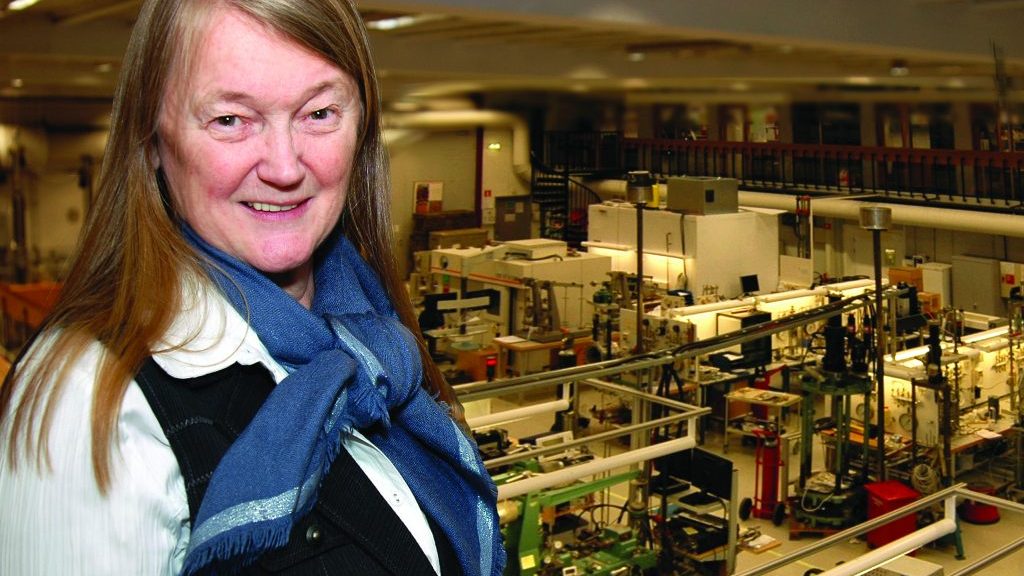An influential civil engineer with small-town Quebec roots and significant international credentials in geotechnical analysis was one of 103 new appointments to the Order of Canada on Dec. 27.
Suzanne Lacasse left her hometown of Noranda in the mid-1960s to pursue a Bachelor of Arts degree and went on to study engineering at Ecole Polytechnique of Montreal and the Massachusetts Institute of Technology, earning her Ph.D. in 1976.
Forty years ago, after a stint as head of the Geotechnical Laboratory at MIT, she began work at the Norwegian Geotechnical Institute (NGI) in Oslo, where she has based her career ever since, rising to become NGI’s managing director in 1991.
Today, retired from the firm, she works full-time on contract as technical director at NGI with 70 per cent of her jobs taking her out of Norway.
Reached by phone, Lacasse said she was surprised her homeland would honour her given her international service.
“I was very surprised,” she said. “I have worked a lot in Norway, although I also work in Canada. I was very proud, because I come from a very small town in Quebec.”
The Order of Canada announcement — Lacasse was named an officer — cited her work as a geotechnical engineer in the area of risk assessment but Lacasse said that’s merely been a focus the last 10 years.
In her own estimation of her biggest impacts in the field, she names her work in understanding and describing mathematically how soil responds to cyclic loading, such as waves, at offshore oil and wind power platforms as one of two major contributions.
“It is the standard method used by everyone in the world now,” she said.

Her work on the stability of piles on offshore platforms took off early in her career and it remains a lucrative part of her consulting work. They are expensive pieces of infrastructure, she said, and normally constructors follow a conservative and rigid building code. But Lacasse developed a probabilistic analysis of risks that gives owners an alternative path to reach required standards while still meeting the code.
“In one platform we saved $40 million using this probabilistic approach,” Lacasse said. “We were trying to ensure a uniform level of safety. If you don’t do it the probabilistic way, you don’t have a uniform level of safety. So far, 13 case studies have been done, and we have always saved money.”
Her second biggest legacy accomplishment, she said, lies in turning the theoretical into the practical in her field.
“I worked at simplifying analysis so everyone can understand it, how probabilistic analysis works, how risk assessment works,” she said.
Other notable geotechnical research has improved international practices and standards for slope stability and landslides, for transportation infrastructure stability such as roads and airports, for the integrity of dams and for assessing the impact of tsunamis and other natural disasters.
Working with aging dams, Lacasse explained, she is often required to assess the cost effectiveness of different rehabilitation measures. Employing Bayesian network probabilistic analysis, she might create a diagram of events that can occur to assess the probability of combinations of events leading to failure and might end up recommending the owner build a new spillway, for example, to reduce the chance of system collapse.
“It’s a very nice method and it is gathering a lot of interest among dam owners,” said Lacasse.
She visits Canada regularly, for work and pleasure. One consultancy was in the aftermath of tragedy — the disastrous flooding and mudslides in the Saguenay region of Quebec in 1996. She was hired by the Quebec government to determine causes and develop a system to evaluate risk and reduce the chance of future occurrences.
Recently Lacasse wrote a proposal for and then joined a large team benchmarking soils at five diverse locations in Norway, in a project billed as Norway’s National GeoTest Site Research Infrastructure project; the project leader is another Canadian at NGI, Jean-Sebastien L’Heureux, noted Lacasse. The work will have applications around the world, including Canada directly, given the similarity of the geography and soils in Norway to Canada’s north.
“These five different sites are like models, so when you have a similar site, like in Quebec and Ontario, then you can use the properties that are derived from these test sites in order to minimize the samples you have to take, or as a model for calculation,” Lacasse said.
Increasingly, standards must be higher to deal with climate change, Lacasse said. She is on the Slope Safety Technical Review Board for mountainous Hong Kong, tasked with dealing with increasingly intense rainfall.
“That means many more landslides and we have to be prepared for that,” she said.
Lacasse does similar work in Canada, and recently was hired by BC Hydro to assess the strength of its dam infrastructure.











Recent Comments
comments for this post are closed